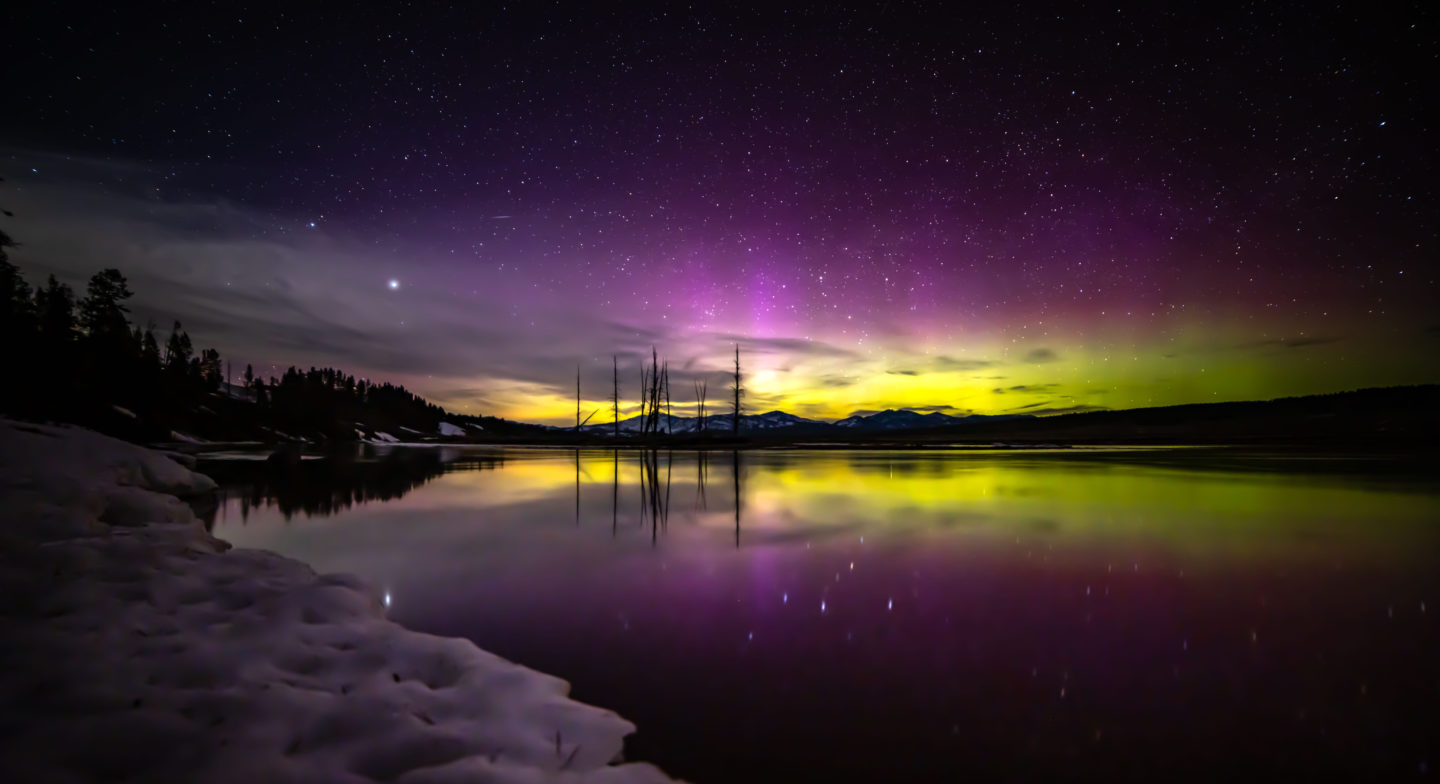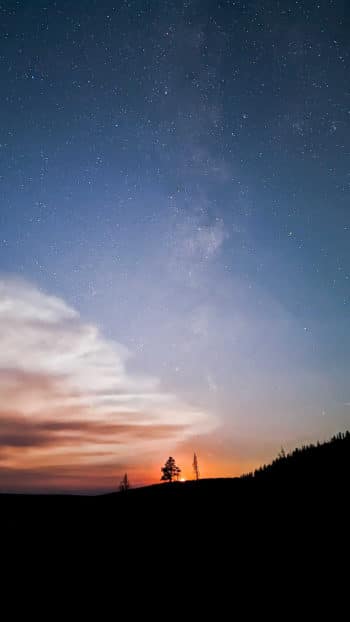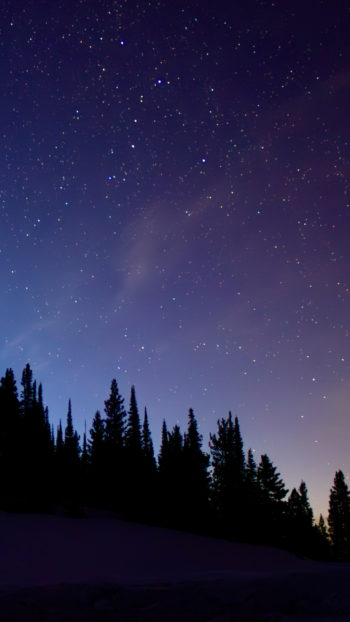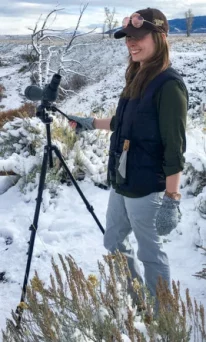If you’re planning a visit to Yellowstone National Park, don’t miss the opportunity to experience its breathtaking night sky. While you can stargaze on your own and the park offers some public Yellowstone astronomy programs, private stargazing tours in Yellowstone take your experience to another level. From expert insights to high-powered telescopes, these tours provide an unforgettable look at the cosmos. Here, we’ll explore why booking a stargazing tour is the best way to witness Yellowstone’s celestial wonders.
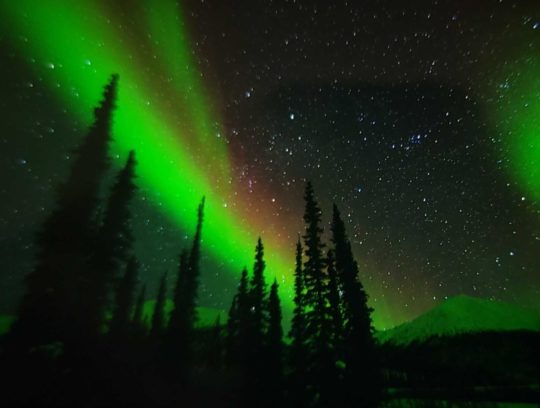
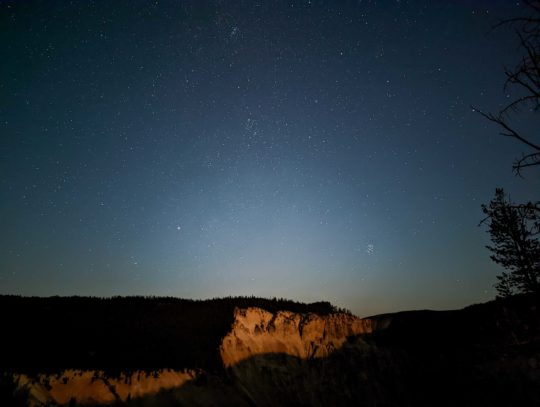
The Magic of Yellowstone’s Night Sky
Yellowstone’s night sky offers an unforgettable stargazing experience, where celestial wonders come alive against the backdrop of untouched wilderness. With minimal light pollution, the park’s clear, high-altitude skies allow for an unobstructed view of countless stars, planets, and constellations. As darkness falls, the Milky Way stretches across the heavens in all its glory while meteors streak across the sky and the glow of faraway galaxies sparkles in the distance. Whether you’re a seasoned stargazer or a first-timer, Yellowstone’s awe-inspiring night sky invites you to marvel at the vast beauty of the universe in a truly magical setting.
What Makes Yellowstone One of the Best Stargazing Destinations?
Yellowstone stands out as one of the best stargazing destinations for several reasons. First, its remote location and vast wilderness ensure minimal light pollution, creating a pristine canvas for the night sky. At over 7,000 feet in elevation, the park’s high altitude offers clearer, crisper air, allowing for sharper views of stars, planets, and constellations. The park’s expansive landscapes, including geothermal features and rugged terrain, make for an unforgettable stargazing experience where the natural beauty of the park blends seamlessly with the night sky. Additionally, Yellowstone is working towards earning the status as a designated International Dark Sky Park means it will be specifically preserved for optimal stargazing, with programs and events designed to help visitors fully appreciate its cosmic wonders. Whether it’s the Milky Way stretching overhead or the spectacle of shooting stars, Yellowstone’s night sky is a breathtaking showcase of the universe at its most stunning.
The Park’s Dark Sky Preservation Efforts
Yellowstone National Park is dedicated to preserving its night skies through a range of Dark Sky preservation efforts, ensuring that visitors can experience the wonders of the cosmos in an environment free from excessive light pollution. Soon to be recognized as an International Dark Sky Park, Yellowstone takes proactive steps to maintain the natural beauty of its nighttime environment. The park has implemented lighting regulations to reduce light pollution, utilizing energy-efficient, downward-facing lighting to limit unnecessary brightness that can interfere with stargazing. Additionally, the park offers educational programs and events to raise awareness about the importance of preserving dark skies and the science of astronomy. With its commitment to preserving both its unique natural landscapes and the integrity of its night skies, Yellowstone provides a sanctuary for stargazers and an opportunity to connect with the universe in its purest form.

What to Expect on a Yellowstone Stargazing Tour
A Yellowstone stargazing tour offers a magical experience in one of the most iconic national parks in the U.S. Here’s what you can expect on a typical stargazing tour in Yellowstone:
Expert-Led Astronomy Lessons
Our tours are led by a knowledgeable astronomer who knows the best stargazing spots in Yellowstone and will help you identify stars, planets, and constellations. They’ll also share interesting facts about the night sky, the science behind it, and Native American star stories. Your guide will point out stars and explain their significance—both scientifically and culturally. For example, you might learn about the Big Dipper, Orion, and Cassiopeia and how to navigate using these constellations. You will discuss how ancient civilizations used the stars for navigation, farming, and timekeeping, giving you a sense of how humans have interacted with the night sky throughout history. Your guide may take you through some of the deeper objects in the night sky, like star clusters, nebulae (clouds of gas and dust), and distant galaxies. They’ll explain what these objects are, how they form, and their significance to the universe.
High-Powered Telescopes for Planet and Star Viewing
Your guide will bring telescopes for a closer look at planets, moons, star clusters, and other celestial bodies. They’ll teach you how to use the equipment and point out key features, like the rings of Saturn or the Great Red Spot of Jupiter. Telescopes are also excellent for viewing star clusters such as the Pleiades (the Seven Sisters), Hercules Cluster, or Orion’s Belt. The high magnification helps to reveal individual stars within clusters, and you can observe how these stars are arranged in the sky.
Best Locations for Night Sky Observations
Norris Geyser Basin is one of the most active geothermal areas in Yellowstone, and its high elevation offers great views of the night sky. The clear, dark skies and minimal artificial light make it an ideal spot for stargazing. It also provides a unique backdrop of steaming geysers, which can add an eerie glow to your stargazing experience.
Lamar Valley, located in the northeastern part of the park, is renowned for its wildlife and wide, open spaces, making it a perfect place for stargazing. It has very little light pollution, and the distant mountains create a stunning landscape for night photography.
The area around Lake Yellowstone offers spectacular, unobstructed views of the sky, especially along the West Thumbsection. The lake’s reflective surface can provide a stunning backdrop for photographing the stars, especially when the water is calm. This area is excellent for star clusters and distant galaxies. Milky Way viewing in Yellowstone is amplified by the water’s reflection. This location allows for amazing shots of the night sky over the water.
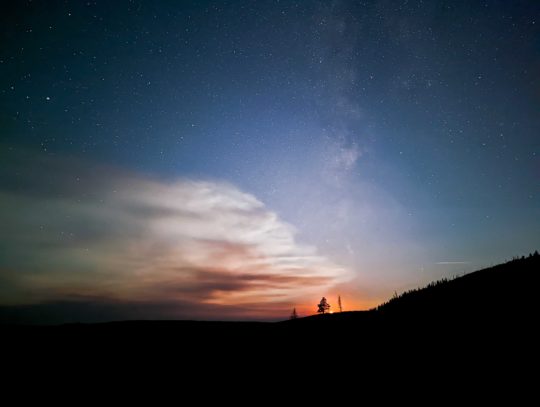
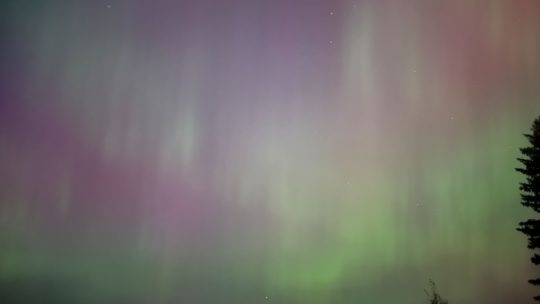
Benefits of Choosing a Guided Tour Over Self-Guided Stargazing
Choosing a guided night sky tour of Yellowstone over self-guided stargazing can enhance your experience in many ways, especially in a place like Yellowstone National Park where the vast landscape, clear skies, and rich natural history offer an unforgettable setting for stargazing. Here are several reasons why a guided tour might be a better option:
Access to Exclusive Viewing Locations
Guides know the best stargazing locations within Yellowstone away from crowds and light pollution. They are familiar with the park’s geography and can lead you to areas that provide the clearest, most unobstructed views of the night sky. They will also ensure that you’re in a safe spot, away from wildlife or any environmental hazards. On your own, it can be challenging to find the best spots, especially in a vast park like Yellowstone, where terrain, weather conditions, and access points can vary. A guided tour ensures you’re in the right place at the right time.
Learning About Constellations, Planets, and Deep Sky Objects
A guide will help you identify constellations, stars, and planets, explaining their characteristics and significance. They might also share fascinating facts about the universe, like the life cycle of stars or how galaxies form. A self-guided experience can lack this educational depth. If you’re interested in capturing the night sky, guides often offer tips on astrophotography—such as how to adjust your camera settings for long-exposure shots or how to best capture the Milky Way.
Safety and Comfort in the Wild at Night
Navigating Yellowstone at night can be tricky, especially in areas where wildlife is active or where road conditions may be uncertain. A guide is familiar with the terrain, ensuring you stay safe and comfortable. In a large, dark park, finding your way around can be difficult, even with GPS or a map. A guide takes the stress out of this by handling logistics like parking and navigation.

How to Prepare for Your Yellowstone Stargazing Tour
Preparing for a Yellowstone stargazing tour involves a mix of practical planning and ensuring that you’re set up to enjoy the stunning night skies. Here are a few tips on how to prepare for the best experience:
What to Bring for an Unforgettable Experience
Even in the summer, temperatures in Yellowstone can drop quickly at night, especially in higher elevations. Dress in layers—bring a light jacket, a warm layer, and a heavier coat if needed. A red flashlight is crucial for preserving your night vision. Avoid using regular white light, as it can ruin your ability to see the stars. If you don’t have a red flashlight, you can use red tape or a red filter over your regular flashlight. If you’re into photography, bring a camera with manual settings for long-exposure shots. A tripod is essential to avoid blurry images when capturing the stars, and consider a wide-angle lens for wide shots of the sky and landscape below.
Best Times of Year to Book a Tour
The best time to book a Yellowstone stargazing tour depends on your preferences for weather and celestial events. Summer (June to August) offers clear skies, mild temperatures, and alignment with our galactic core, making it ideal for viewing the Milky Way. Fall (September to October) brings cooler temperatures, less crowding, and excellent meteor showers like the Draconids and Orionids. Winter (November to March) offers long, dark nights for stargazing, with the possibility of seeing the Northern Lights, though it can get quite cold. Spring (April to May) offers crisp, clear skies and fewer tourists, but weather can still be chilly.
Photography Tips for Capturing the Night Sky
If you plan on taking photos of the night sky, set your camera to manual mode. Use a wide aperture (f/2.8 or lower), a high ISO (800-3200), and a long exposure (15-30 seconds). Adjust according to your camera and the available light. If you’re interested in capturing star trails, set your camera to take longer exposures or create a time-lapse sequence by capturing many photos and stacking them together.
Whether you are an avid stargazer or simply have an appreciation for a starry night sky, a stargazing tour in Yellowstone is sure to surpass all of your expectations. You’ll come away with a new appreciation for what lies beyond what we know, and a more personal understanding of the celestial world. When your eyes come down from the sky, the spectacular Yellowstone landscape will continue to amaze you. Book your Yellowstone stargazing tour now!
FAQs
What makes a guided stargazing tour better than self-guided viewing?
Expert guides provide deep astronomical knowledge, professional-grade telescopes, and access to the best stargazing spots in the park. You’ll get to observe celestial objects with great detail and learn fascinating facts with the opportunity to ask questions.
What will I see on a Yellowstone stargazing tour?
Depending on the season, you’ll see planets, the Milky Way, shooting stars, and even distant galaxies.
Is a stargazing tour safe in Yellowstone?
Yes! Guides are knowledgable about the local wildlife to ensure your safety, provide flashlights with red filters, and help you navigate the terrain, including thermal areas.
Do I need special equipment for the tour?
No, but if you have binoculars or a camera, bring them along! The tour will provide telescopes for enhanced viewing.
Can kids join a Yellowstone stargazing tour?
Absolutely! Stargazing tours are family-friendly and a great way to introduce kids to astronomy.
When is the best time to book a stargazing tour in Yellowstone?
Late spring to early fall offers clear skies and more mild temperatures, but winter stargazing is also stunning.

